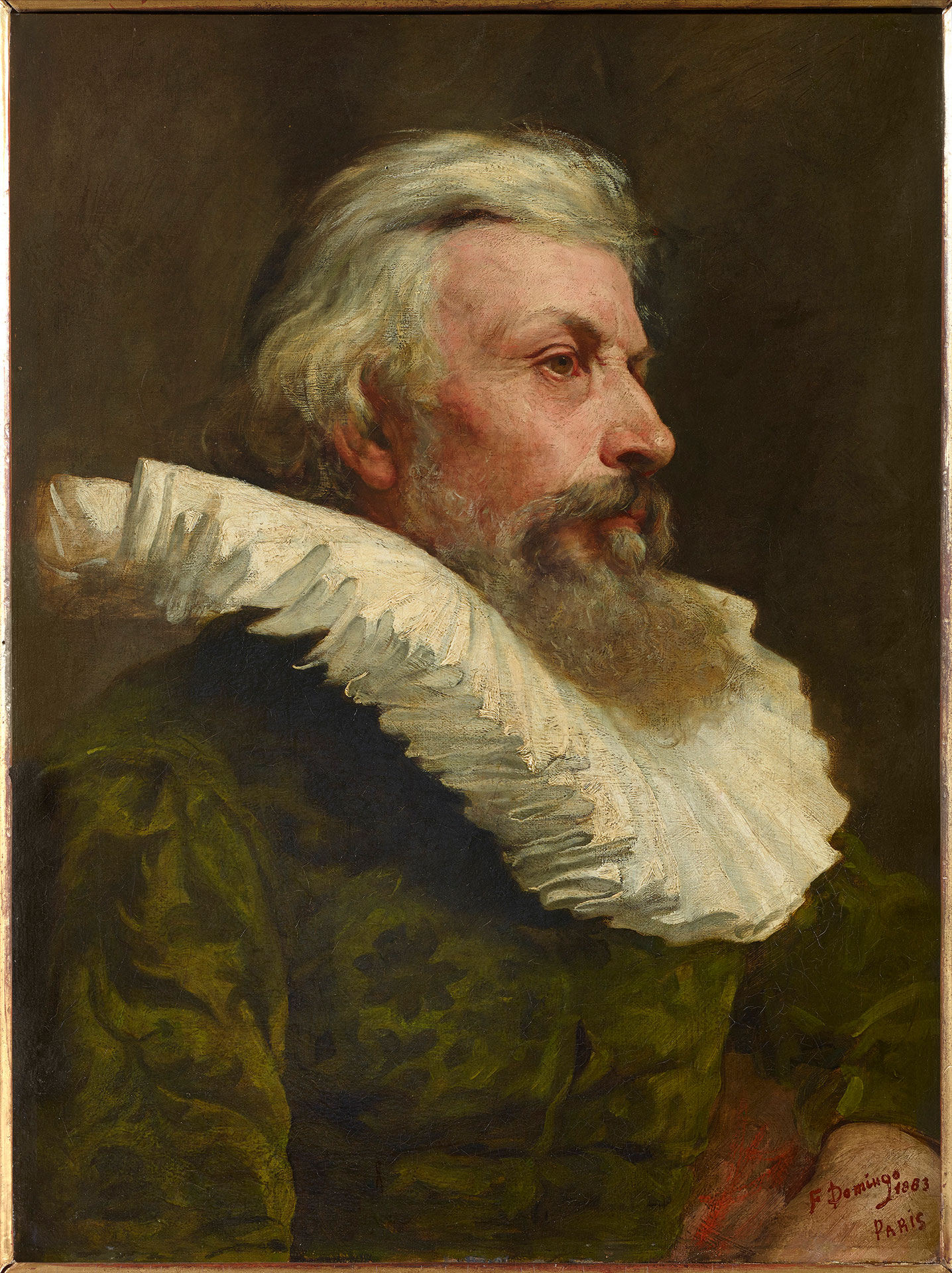
Francisco Domingo Marqués (Valencia, 1842 – Madrid, 1920)
Portrait of a Gentleman
1883
WORK INFORMATION
Oil on canvas, 61 x 45.5 cm
OTHER INFORMATION
Signed and dated in the lower right-hand corner: "F. Domingo / 1883 / Paris"
Francisco Domingo Marqués studied at the School of San Carlos in Valencia, though he did one year (1863–1864) at that of San Fernando in Madrid. Like most artists then, he started out with history paintings. It was during this period that he painted The Blessed Juan de Ribera in the Expulsion of the Moriscos, which received an honorary mention at the National Fine Arts Exhibition held in Madrid in 1864, and An Incident in the 17th Century, which won the third-place medal at the 1867 exhibition. He completed his training in Rome thanks to a grant from the Provincial Council of Valencia (1868–1869), and from there he sent the sponsoring institution his work The Final Day of Saguntum.
Back in Valencia, he set up shop in the Llano de la Zaidía district, in an establishment known as La Gallera to which the Benlliure brothers came as his apprentices, and he was hired as a drawing teacher (specialising in landscapes, life and classical drawing) at the School of San Carlos, where Emilio Sala and Ignacio Pinazo numbered among his disciples. He soon resigned his post and moved to Madrid in 1872, where he painted, among other works, A Party under Louis XV for the Duke and Duchess of Bailén.
In 1875 he transferred to Paris, where in a sense he inherited part of the recently deceased Mariano Fortuny's clientele. While the artist from Reus was noted for his brilliant, meticulous detail, Domingo's work, continuing in the vein of his Saguntum, tended towards sketchiness and spontaneity at the service of genre scenes set in the 17th and 18th centuries with a certain Goyesque air.
Domingo was not an epigone of Fortunyism; his merit was finding a niche in a very important market—Vanderbilt, for instance, was a client of his—for his own distinctive style. His formats—tableautins or small panels—and themes were similar to Fortuny's but did not imitate his style.
Domingo's great prowess and perfect technique earned him a comfortable spot in commercial circles that ensured his financial wellbeing, while the more restless artists of his day, the Impressionists, were still painfully struggling to impose a new aesthetic which in time would completely overtake the line followed by Domingo.
Portrait of a Gentleman is a typical example of 1800s painting conceived for display in a museum. At the time he painted this picture, Domingo was sequestered in the town of Saint-Cloud on the banks of the Seine, painting and drawing in an unpremeditated fashion, and while his work was spreading to the rest of the world, it was increasingly less known in Spain.
The outbreak of World War I forced him to return home. He settled in Madrid, where not even Sorolla and Benlliure managed to convince the jury of the National Exhibition to award him the medal of honour. He was, however, made a fellow of the Academy of Fine Arts of San Fernando in 1917, and Mariano Benlliure, then Director-General of Fine Arts, sponsored a grand tribute to him in Valencia. [Francesc Fontbona]

